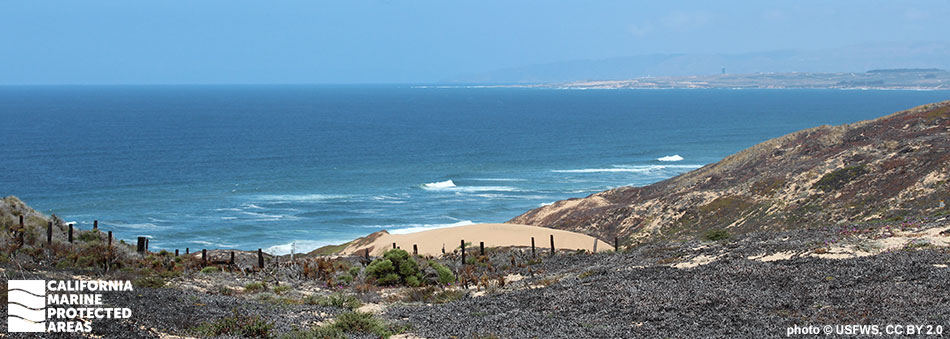
Overview
Vandenberg State Marine Reserve (SMR) is a remote marine protected area (MPA) that lies just offshore from Vandenberg Space Force Base (previously Vandenberg Air Force Base), on the northern side of Point Conception, about 70 miles west of Santa Barbara. It covers nearly 33 square miles of diverse ocean habitat and spans from shore to depths greater than 120 feet. This SMR contains a combination of sandy beach, rocky reef, marsh, tidal flat, and estuary habitats.
Fishes, marine mammals, and resident and migratory seabirds abound in this area, which is near the convergence zone of the southbound California Current and warmer northbound currents. The marine environment around Point Conception, including Vandenberg SMR, reflects this blending of temperatures in its mix of resident and migratory cold-water and warm-water species. Vandenberg SMR is closed to public access without specific authorization from the United States Air Force.
Regulations
It is unlawful to injure, damage, take, or possess any living, geological, or cultural marine resource.
California Code of Regulations Title 14, Section 632(b)(95)(opens in new tab)
Quick Facts
MPA size: 32.91 square miles
Shoreline span: 14.5 miles
Depth range: 0 to 127 feet
Habitat composition*:
- Rock: 7.04 square miles
- Sand/mud: 30.07 square miles
*Habitat calculations are based on three-dimensional area and may exceed the total MPA area listed above.